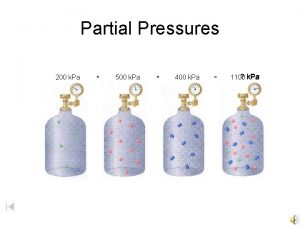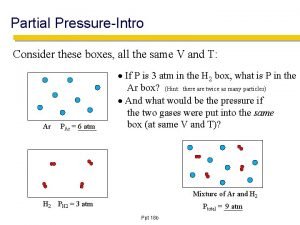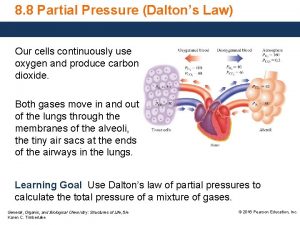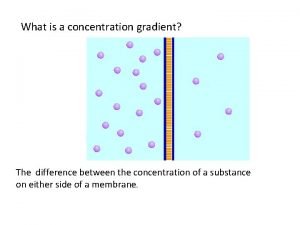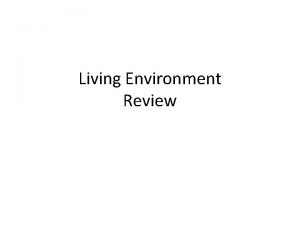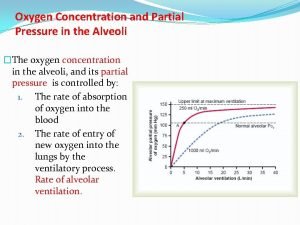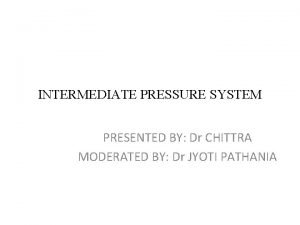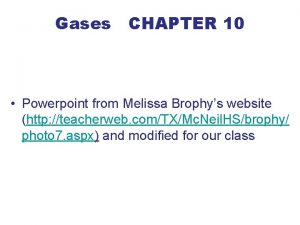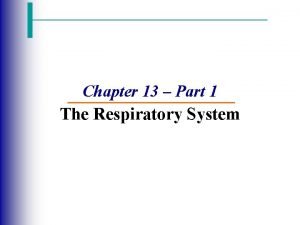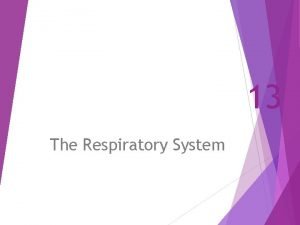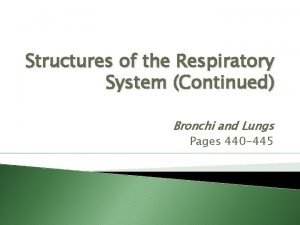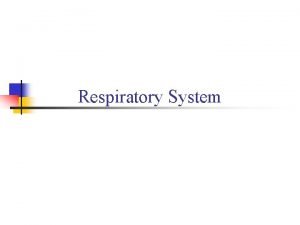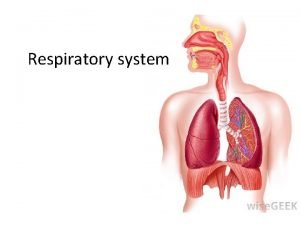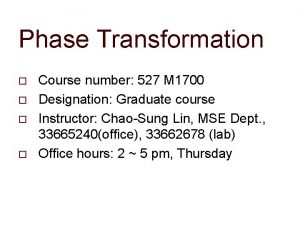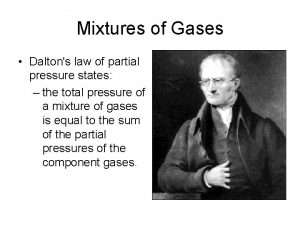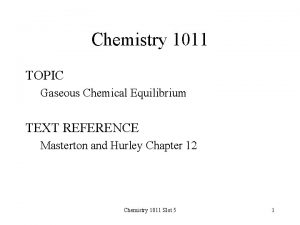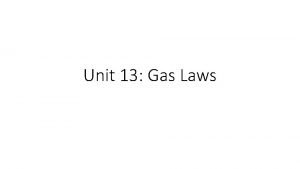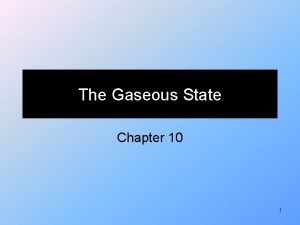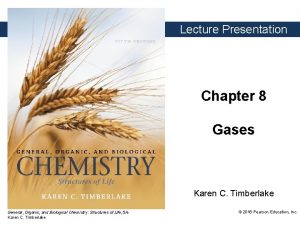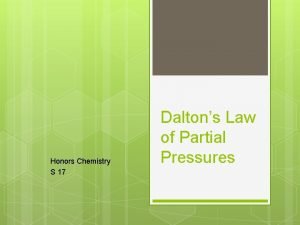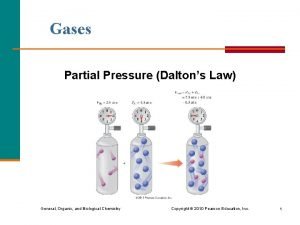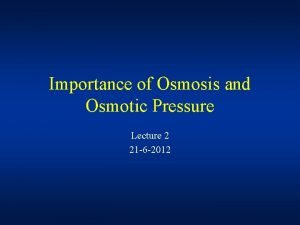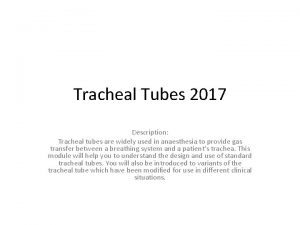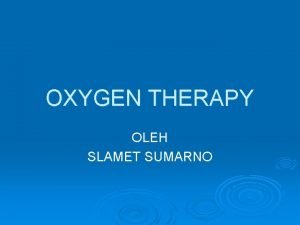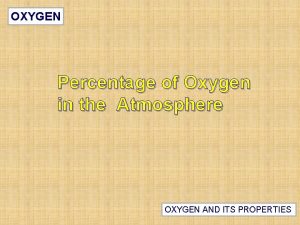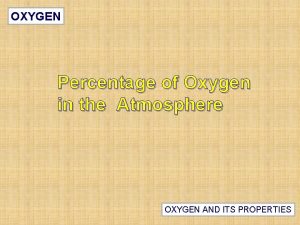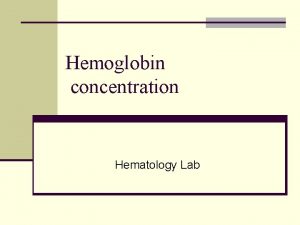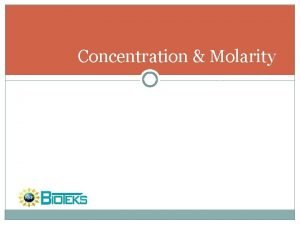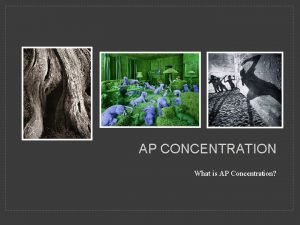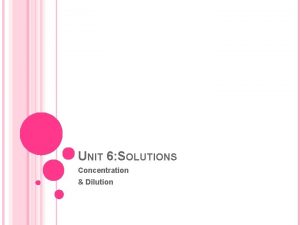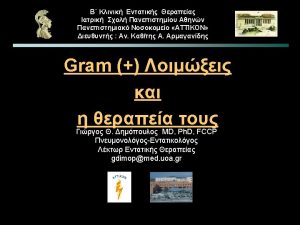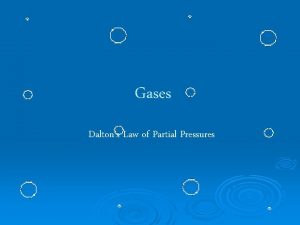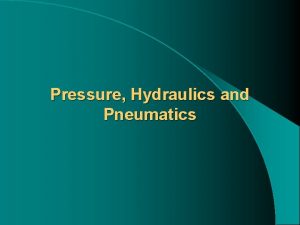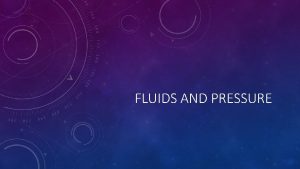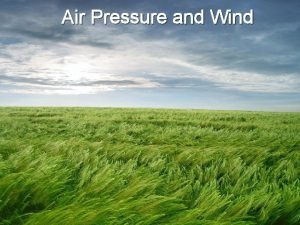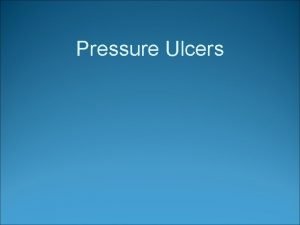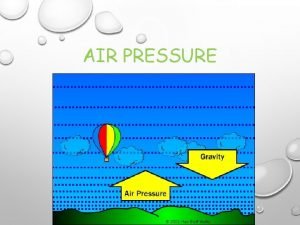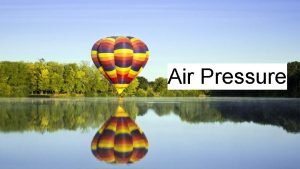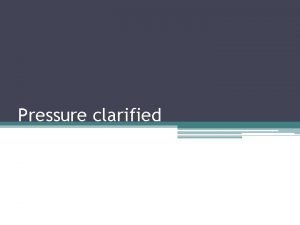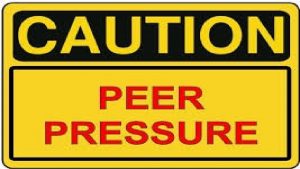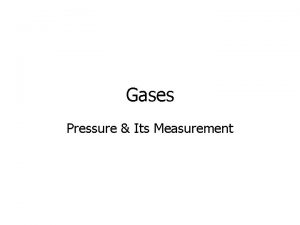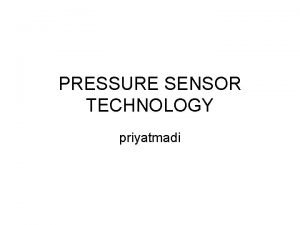Oxygen Concentration and Partial Pressure in the Alveoli


























- Slides: 26

Oxygen Concentration and Partial Pressure in the Alveoli �The oxygen concentration in the alveoli, and its partial pressure is controlled by: 1. The rate of absorption of oxygen into the blood 2. The rate of entry of new oxygen into the lungs by the ventilatory process. Rate of alveolar ventilation.

CO 2 Concentration and Partial Pressure in the Alveoli �Determined by two factors: �First, the alveolar PCO 2 increases directly in proportion to the rate of carbon dioxide excretion �Second, the alveolar PCO 2 decreases in inverse proportion to alveolar ventilation.

REGULATION OF RESPIRATION By Dr. Mudassar Ali Roomi (MBBS, M. Phil. ) Assist. Prof. Physiology

Control of respiration Two types: 1. Nervous control of respiration 2. Chemical control of respiration

Control of repiration Components: �Sensors � gather information �Central controller � integrate �Effectors � muscles signals

Respiratory centre �Located bilaterally in medulla oblongata and pons. �Composed of 1. Dorsal Respiratory Group (DRG) 2. Ventral Respiratory Group (VRG) 3. Pneumotaxic center 4. Apneustic center

Respiratory centre

Pre-Botzinger complex (pre-BOTC) �A collection of pace-maker cells at the upper end of Dorsal Respiratory Group (DRG) �Synaptic connection with DRG �Function: Discharges rhythmic respiratory signals

Dorsal Respiratory Group (DRG) � Extends most of the length of M. oblongata � LOCATION: Neurons located in nucleus of tractus solitarius and additional neurons in reticular substance of medulla � vagus and glossopharyngeal nerve terminates at Nucleus of tractus solitarius � Both nerves – afferent nerves for resp. signals to center � Pace maker neurons send ramp signals to inspiratory muscles in a Rhythmic fashion

�Ramp signals controlled by (a) Pneumotaxic center (b) Stretch receptors in the lungs Significance of ramp signals � No gasping � Smooth inflation of lungs Full cycle of respiration 5 seconds � 2 sec inspiration � 3 sec expiration

�Fibers from respiratory center (DRG) reach the motor neurons in spinal cord between C 3 & C 5 to form phrenic nerve �Complete lesion of spinal cord above C 3 will stop the breathing �Lesion after C 5 will not affect the respiration

The Hering-Breuer Inflation Reflex � Muscular portions of the walls of the bronchi and bronchioles throughout the lungs have stretch receptors � Transmit signals through the vagi into the dorsal respiratory group of neurons when the lungs become overstretched. � Switches Off the inspiratory ramp and thus stops further inspiration � These signals affect inspiration in much the same way as signals from the pneumotaxic center � It also increases rate of respiration

The Hering-Breuer Inflation Reflex �This reflex is activated when tidal volume increases to more than three times normal � Therefore, this reflex appears to be mainly a protective mechanism for preventing excess lung inflation

Lung “J Receptors. ” � Location: In the alveolar walls in juxtaposition to the pulmonary capillaries � Stimalation: Stimulated especially when the pulmonary capillaries become engorged with blood or � Example: When pulmonary edema occurs in such conditions as congestive heart failure. � Their excitation may give the person a feeling of dyspnea.

Ventral Respiratory Group (VRG) � LOCATION: Ventral part of medulla � Two nuclei � (1) Nucleus Ambiguus rostrally � (2) Nucleus Retroambiguus caudally � Both types of neurons – INSPIRATORY & EXPIRATORY � Center remain inactive during quite breathing � Active only in increased pulmonary ventilation, during which signal from DRG spill over to VRG � Stimulation of accessory inspiratory muscles & expiratory muscles

Pneumotaxic Center �Location: Upper part of Pons �Function: Switches off Ramp Signal �Controls rate and duration of Inspiratory ramp signals �Strong stimulation may reduce Inspiratory phase to 0. 5 sec respiratory rate ↑ to 30 – 40/min �Weak stimulation may ↑ Inspiratory phase to 5 sec or more respiratory rate ↓ to 3 -5/ min

Apneustic Center �Located in lower part of pons �Function: Prevent inspiratory neurons from being switched off → prolonged inspiration �Shortens expiration �Such Respiration called – apneusis

CHEMICAL CONTROL OF RESPIRATION Following chemical stimuli stimulate the respiration: 1. Excess CO 2 2. Excess Hydrogen ion 3. Decreased Oxygen

Central chemosensitive area � Stimulated by CO 2 & H+. Oxygen have no effect Peripheral chemoreceptors � Stimulated by O 2. CO 2 & H+ has little effect

Location of Chemosenstive area �Located bilaterally beneath the ventral surface of medulla �Hydrogen ions are only the main direct stimulus for these group of neurons


Peripheral Chemoreceptor �Carotid bodies through Hering N to Glossopharyngeal N �Aortic Bodies through Vagus N to DRG �Both bodies are supplied by special minute arteries direct from the arterial trunk

Stimulation of the Chemoreceptors by Decreased Arterial Oxygen

Effect of Carbon Dioxide and Hydrogen Ion Concentration on Chemoreceptor Activity They have a weak effect but stimulation by way of the peripheral chemoreceptors occurs as much as five times as rapidly as central stimulation


 The partial pressure of oxygen was observed to be 156 torr
The partial pressure of oxygen was observed to be 156 torr How to find partial pressure from total pressure
How to find partial pressure from total pressure How to find partial pressure from total pressure
How to find partial pressure from total pressure Concentration gradient
Concentration gradient Movement of high concentration to low concentration
Movement of high concentration to low concentration Alveoli location
Alveoli location ü
ü Gas stoichiometry
Gas stoichiometry Chapter 13 respiratory system figure 13-4
Chapter 13 respiratory system figure 13-4 Breathing control
Breathing control Alveolar ducts
Alveolar ducts Pearson
Pearson Overexpansion and destruction of the alveoli
Overexpansion and destruction of the alveoli External respiration process
External respiration process Gibbs free energy with partial pressure
Gibbs free energy with partial pressure Partial pressures law
Partial pressures law How to find partial pressure at equilibrium
How to find partial pressure at equilibrium Partial pressure of a gas
Partial pressure of a gas Boyle's law examples
Boyle's law examples Dalton's law
Dalton's law Immiscible
Immiscible Dalton law of partial pressure
Dalton law of partial pressure Dalton's law of partial pressure
Dalton's law of partial pressure Dalton's law of partial pressure
Dalton's law of partial pressure Bernoulli rule of integration
Bernoulli rule of integration Low oncotic pressure
Low oncotic pressure Bevel of et tube
Bevel of et tube
